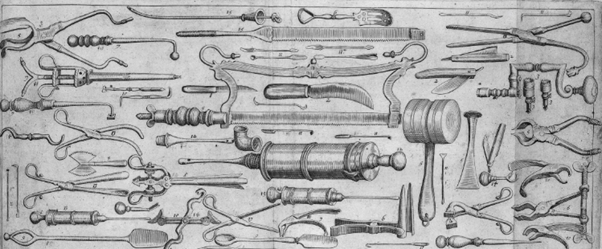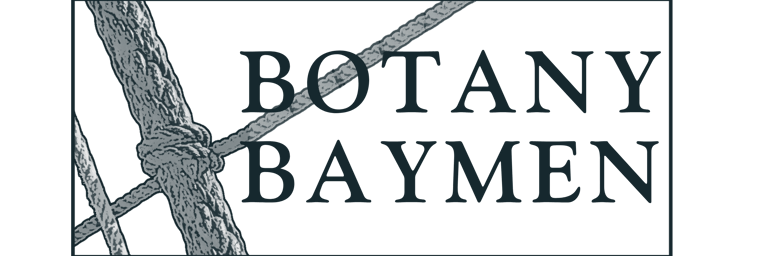Men 'Bred in the Medical Line'
To save cost, some Botany Baymen with small crew numbers carried men with a limited amount of medical experience as ship's surgeons.
Gary L. Sturgess
10/18/20256 min read


The masters of Botany Baymen faced a dilemma. They were carrying small crews – on Australia’s First Fleet, Alexander, largest of the convict transports, had a crew of only 27, while Borrowdale, smallest of the store ships, was carrying only 17. But they were also sailing to the far side of the world, voyages of two years or more through unfamiliar waters, and it was unlikely that a medicine chest and a medical handbook would be enough.
The solution lay in hiring men who had some medical experience, but were not formally qualified - they would not be as expensive, and they would be prepared to undertake other duties throughout the voyage when their medical expertise was not required.
I ignored the evidence of this for a long time – to start with, private cargo lists of the ships’ officers while they were at China which included men described as ‘surgeons’ – and I have only recently come to appreciate their significance.
Only three of the First Fleet returned to Europe via China, Charlotte, Scarborough and Lady Penrhyn. We knew the Lady Penrhyn carried a ship’s surgeon, Arthur Bowes Smyth, because he was employed by Captain Phillip, the commodore of the fleet, to also serve as surgeon to the women who were transported on that vessel. And he kept a journal.
But there was nothing in the records to say that the Charlotte and the Scarborough carried men with medical experience; until several years ago, when I turned up the ‘Manifests of Private Trade’ for these ships in the East India Company records at the British Library.
John Toulmin
The officers of East Indiamen were permitted to return from the Far East with a quantity of private trade goods for their personal advantage, and this privilege extended to ‘Extra Ships’, vessels taken up by the Company for individual voyages.
Given the view which has prevailed until recently, that most of the First Fleet ships carried no ship’s surgeon, I initially concluded that the inclusion of ‘surgeons’ in the private trade lists for the Charlotte and the Scarborough must have been a ruse, with one of the crew identified as a surgeon so the captain could increase his quantity of trade goods.
- until I stumbled across other mentions of the ‘surgeon’ on board the Scarborough, a young man named John Toulmin (see Catspaw, ‘Forgotten First Fleeters 2: John Toulmin’). Mollie Gillen had missed him in her ‘Biographical Dictionary’, but there were clear references to Toulmin being on the voyage, one of which placed him in the company of medical officers.
I have found no evidence that John Toulmin was formally qualified, but he came from a family of surgeons and apothecaries, and was thus ‘bred in the medical line’ (as the saying went).
In one of the records, he was described as a ‘purser’, which suggests that he also performed other functions throughout the voyage. He would have been in his early 20s at this time, and the most logical explanation is that Captain Marshall employed a young man with some medical knowledge who would be happy to perform other duties. Toulmin did not pursue medicine as a career, and subsequently joined the Royal Navy as an officer.
The private trade list of the Charlotte also mentioned a ‘surgeon’. I have not yet been able to find anything more about Enoch Story, but it seems likely that he was in a similar position to John Toulmin. He was certainly not a qualified surgeon, since Captain Gilbert specifically said that he did not have one on board.
Samuel Lightfoot
I was prompted to write this Catspaw after stumbling across a third example – from the Surprize, which carried convicts to NSW in 1794, and returned home via Bengal the following year. In this case, the source is a list of emancipated convicts who were permitted to leave the colony on board this vessel. Once again, it is found in the records of the East India Company.
On their arrival at Calcutta (now Kolkatta), one of these men, a First Fleet convict named Samuel Lightfoot, was described in the crew manifest as their ‘doctor’.
It is unknown whether Lightfoot had any prior medical training, but he sailed to NSW on the Charlotte, and formed a close relationship with the Surgeon-General of the expedition, John White, who was also quartered on that ship. White took him under his wing and employed Lightfoot as a hospital assistant in the colony for five years.
How Lightfoot made a living on his return to England is unknown, but when the government was proposing to send convicts and marines to Port Phillip in 1803, he approached White, who strongly recommended that he should be employed as a medical assistant.
When the Port Phillip settlers were relocated to Hobart shortly thereafter, Lightfoot accompanied them and served as a medical attendant at the General Hospital there until his death in 1818. His medical expertise was sufficiently well respected that in 1815, he signed a certificate on behalf of the then Lieutenant Governor, attesting to the state of his health.
John Turnpenny Altree
One further case study – drawn, yet again, from the First Fleet. It had long been known that John Turnpenny Altree sailed with the Lady Penrhyn, but his status has been unclear. He was not the ship’s surgeon – that position was filled by Arthur Bowes Smyth – and government paid him a gratuity for his services in attending to the sick female convicts brought on board that ship, he was not in government’s employ.
He had been appointed to the Lady Penrhyn in the capacity of ‘surgeon assistant’, and spent a great deal of time attending to the venereal disease and typhus which afflicted the women brought on board from the prisons. By late March 1787 he had succumbed to the fever and spent a month on shore recuperating. He returned to the ship shortly before the fleet sailed.
Phillip had concluded that the 23-year-old Altree was ‘very unequal to the task’, and in his absence, asked Bowes Smyth, who had joined as ship’s surgeon, if he would also serve as medical attendant to the women convicts. When he came back on board, Altree was moved to steerage with other members of the crew, ‘to take charge of the medicines and attend to the sick’, that is, as a medical assistant.
While not formally qualified, Altree had been appointed because he was ‘bred in the medical line’. His father had been a surgeon, and his grandfather, also named John Altree, was a renowned ‘man-midwife’ (or obstetrician, as we would call him today), who performed one of the first successful caesareans, a case study that was laid before the Royal Society. It is undoubtedly for this reason that young Altree was employed by the owners of the Lady Penrhyn, although, once again, in their attempt to save cost, they wound up appointing someone who was not sufficiently experienced.
Altree would later serve as assistant surgeon on Norfolk Island, returning to England in 1791. He was an assistant surgeon at the naval hospital at Haslar for a couple of years, before serving in the West Indies during the American War and then returning to his roots in the West Midlands.
Conclusion
British East Indiamen routinely carried surgeons from the early 17th century, British whalers were legally obliged to have a medical practitioner on board from 1733, and slave traders from 1788 (although many owners involved in the Africa trade had employed them much earlier).
Government-appointed surgeon superintendents served on convict transports from 1792 until 1796, when the scarcity of naval surgeons (due to war) forced the Transport Board to rely on the ships’ surgeons to manage the convicts. From 1798 until the end of war in 1815, the government relied these men to be ‘approved’, they were required to keep a journal, and they were paid a financial bonus based on the number of convicts delivered to their destination.[1]
But the need to carry surgeons on other merchant vessels was not addressed until 1854 when legislation was passed requiring that ‘foreign-going ships’ bear a qualified physician, surgeon or apothecary, but only if carrying a hundred persons or more and undertaking a voyage of more than 80 days. Charles Abbott’s authoritative Treatise on the Law Relative to Merchant Ships and Seamen (1802) is silent on the matter. (2)
If only to attract the best seamen, owners and masters had long employed ships’ surgeons, but on a voyage to the far side of the globe, in a vessel with only 15-30 robust young men, it is understandable that they would try to avoid carrying a fully qualified medical practitioner who would refuse to assist in any other way in working the ship.
_____________________________
As usual, this Catspaw is not fully referenced - readers who are interested in pursuing these issues further, can contact the author.
[1] Martin H. Evans. ‘Statutory Requirements Regarding Surgeons on British Whaler Ships’, The Mariner’s Mirror, (2005) Vol. 91. No. 1, pp.7-12; Richard B. Sheridan, ‘The Guinea Surgeons on the Middle Passage: The Provision of Medical Services in the British Slave Trade’, The International Journal of African Historical Studies, (1981) Vol. 14, No. 1, pp. 601-625.
[2] Charles Abbott, Treatise on the Law Relative to Merchant Ships and Seamen, London: J. Butterworth, 1802.
Contact us
Connect with us
Botany Baymen acknowledges the traditional custodians of country throughout Australia and respects their connection to land, water and community.
© Botany Baymen 2024. All rights reserved.
You may download, display, print and reproduce this content for your personal or non-commercial use but only in an unaltered form and with the copyright acknowledged.

